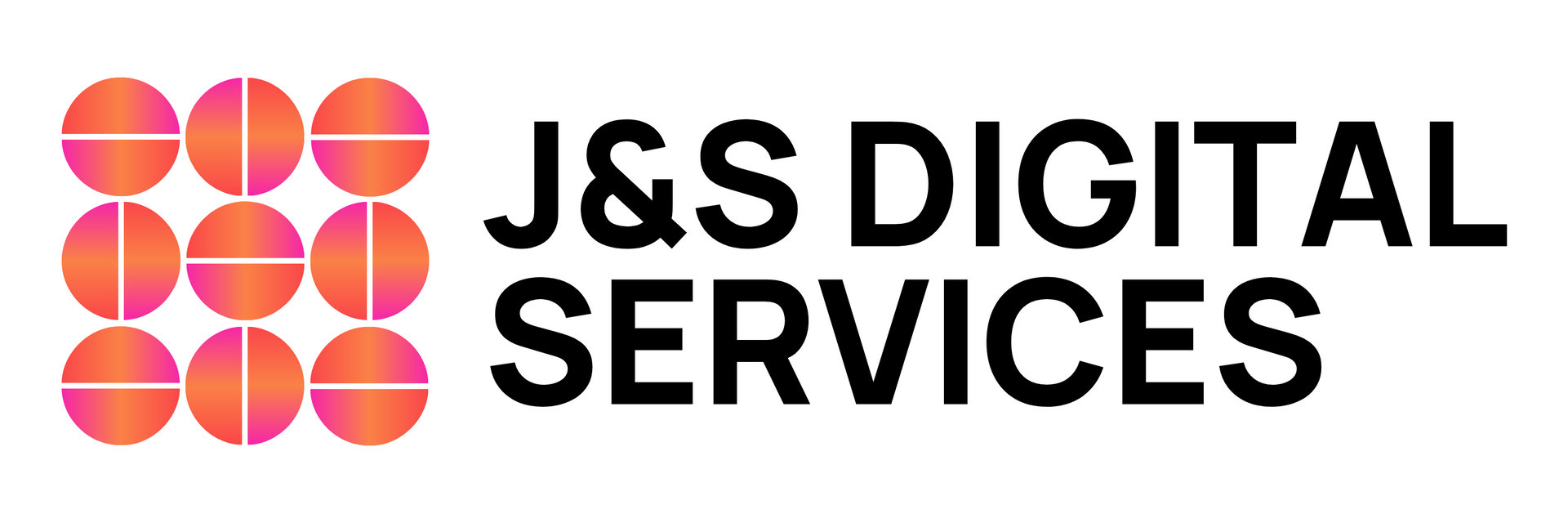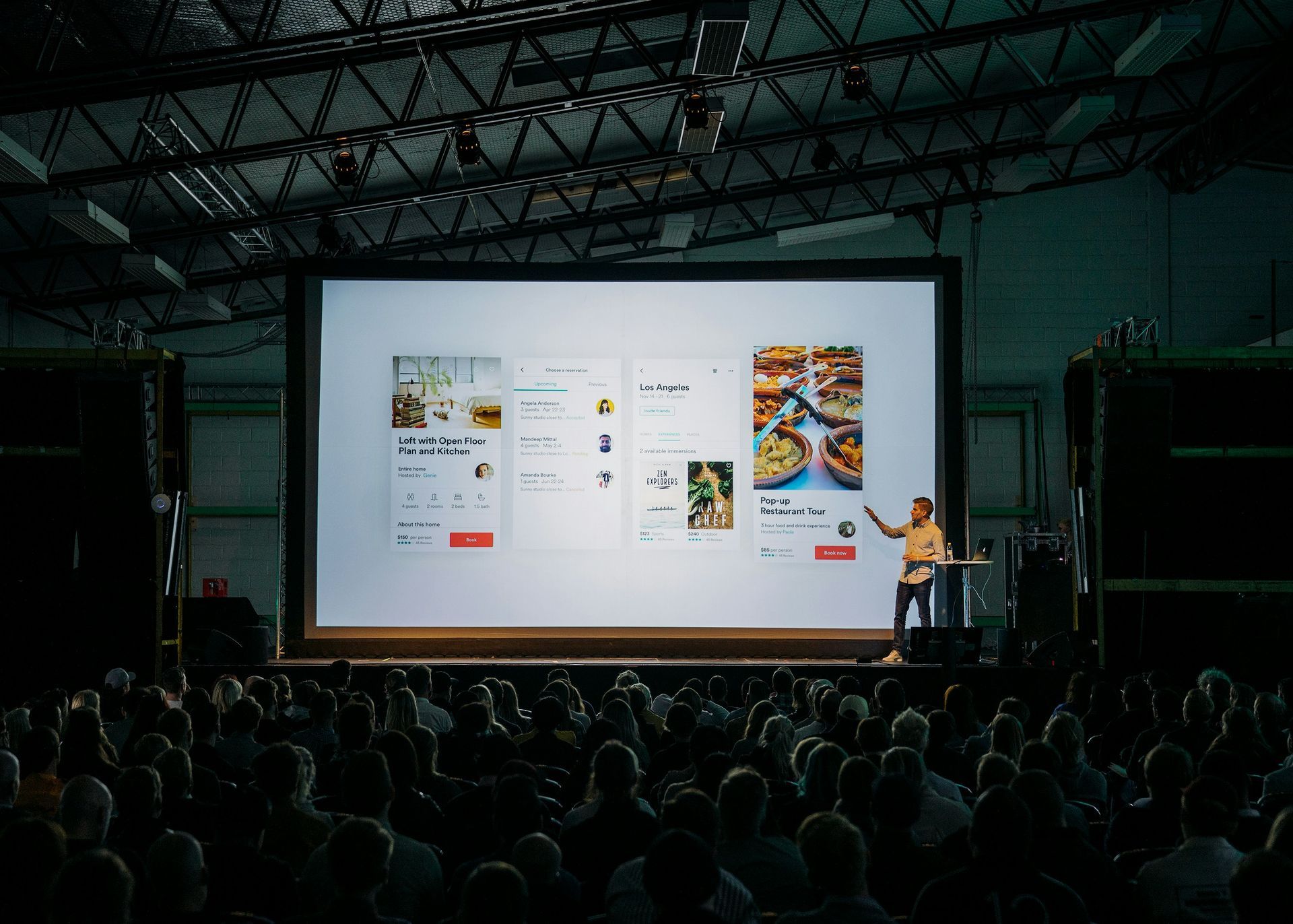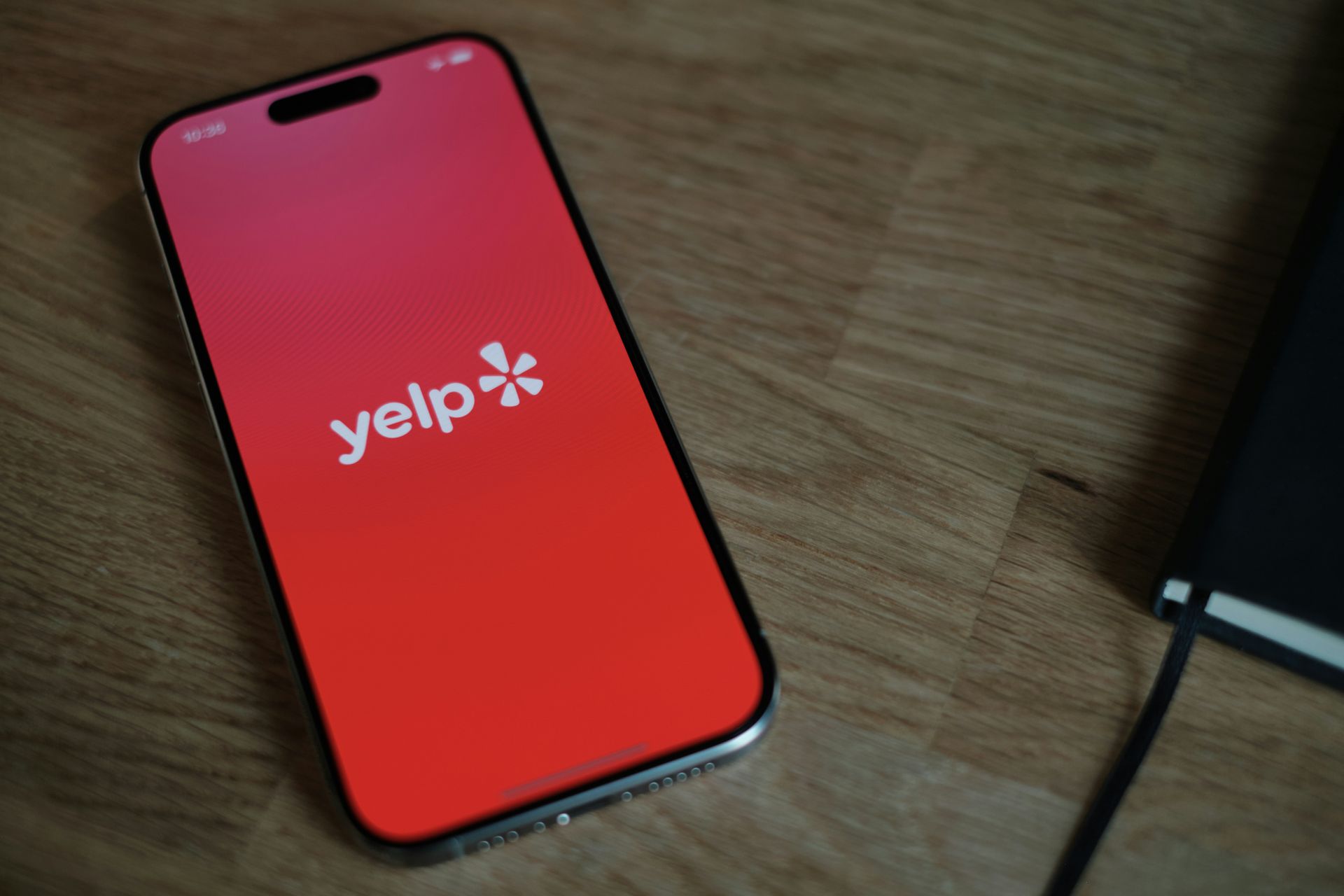5 Critical Steps to Supercharge Your Digital Marketing Strategy in 2025
25 Proven Tips To Transform Your Digital Marketing Strategy in 2025
It’s a new year for you and your company, and being the sensible forward-thinker that you are, you likely have boosting your brand as one of your New Year’s resolutions. But where do you even start?
Fear not. We at J&S Digital have been where you are. Over the years, we’ve discovered different ways to stand out online and create a following. We’ve compiled everything we’ve learned over the years into a condensed 25-step digital marketing guide — and today is your lucky day because it’s what you’re reading right now!
This guide focuses on the five pillars of effective digital marketing, namely SEO, content creation, thought leadership, website design-slash-redesign, and GTM collateral.
By the end of this, you’ll have the tools and know-how necessary for creating an online presence that turns heads, makes you known in the niche, and converts in 2025 and beyond. Let’s dive in!
Step 1: Stay Ahead in Search With SEO
SEO, or search engine optimization, is still critical in 2025 and should be a large part of your digital marketing strategy.
If you’ve been in the game for a while, you know SEO’s golden rule: evolve or get left behind. With algorithms constantly changing, staying on top requires agility and a forward-thinking approach.
Embrace AI-Powered Optimization
AI is all over the place these days, and 2025 is shaping up to be the year when it can give businesses and individuals a competitive advantage.
Without a doubt, AI is changing the future of SEO. Tools like ChatGPT and Jasper can help generate content ideas, craft meta descriptions, and even optimize headings to align with search trends. But AI doesn’t stop at content creation. Platforms like Clearscope and SurferSEO analyze top-performing pages to help you tailor your content to rank higher.
By integrating AI tools into your strategy, you can identify gaps in your content, address keyword opportunities, and refine your overall approach with data-backed precision. Don’t shy away from exploring automation for routine tasks like SEO audits and competitor analysis — this allows you to focus on crafting content that truly resonates with your audience.
Focus on Search Intent
Gone are the days of stuffing keywords into every nook and cranny of your webpage. Today, it’s all about understanding what your audience wants and delivering it in the most engaging and relevant way possible. This means stepping into your user’s shoes: are they searching for a quick answer, an in-depth guide, or a product to purchase?
Take time to analyze your keywords. Are they informational, transactional, or navigational? Use tools like SEMrush or Google’s Keyword Planner to pinpoint intent.
Then, tailor your content accordingly — blogs for informational searches, landing pages for transactional ones, and clear navigation for those trying to find specific information.
Tweak for Voice Search
Smart speakers and voice-enabled devices are everywhere now. For this reason, your SEO should also cover voice searches.
Unlike traditional SEO, long-tail keywords should be the bread and butter of your keyword strategy. Why? Users search differently when speaking compared to typing, favoring long-tail, conversational phrases. Instead of “best pizza San Diego,” a voice query might be, “Where can I find the best pizza near me in San Diego?”
To capture these queries, structure your content with natural language in mind. Create a comprehensive FAQ section that mirrors conversational search patterns, and ensure your local SEO game is on point. Claim and optimize your Google Business Profile, as it’s often the first result voice searches pull from for local queries.
Master Core Web Vitals
At the end of the day, Google (and search engines, in general) reward sites that give users the best user experience. That’s why page experience can now directly impact your search rankings.
Now, of course, Google doesn’t always know if your site’s users are having a good time on your pages. So, to get an idea of the kind of experience your site delivers, Google’s algorithms look at your site’s core web vitals.
These are metrics that measure various aspects of your site, like its loading speed, interactivity, and visual stability.
Improving these metrics isn’t just a technical exercise; it’s about creating a frictionless user experience. Compress your images to speed up load times, use a content delivery network (CDN), and minimize JavaScript. Tools like Google’s PageSpeed Insights can pinpoint areas needing improvement.
Leverage Local SEO
If your business relies on local customers, local SEO should be at the forefront of your strategy.
When optimizing for local searches, make sure you do the following:
- GMB Profile Optimization: Optimize your Google Business Profile with up-to-date information, including your address, phone number, business hours, and high-quality photos.
- Gather Reviews: Encourage satisfied clients to leave positive reviews. These not only boost your credibility but also impact your search rankings.
- Use Location Tags: Don’t forget to include location-specific keywords in your content and metadata. “Best coffee shop in San Diego” is a lot more targeted (and effective) than just “best coffee shop.”
- Don’t Forget Your Backlinks: Keep an eye on local backlinks. Partnering with community organizations or sponsoring local events can help generate these valuable connections.
Step 2: Create Engagement Organically With Content Creation
With SEO covered, let’s move on to the next cornerstone of digital marketing: content creation. Creating relevant and engaging content may just be as important as dialing in your SEO. After all, a robust SEO strategy might drive traffic to your site, but without engaging content, your visitors won’t stick around.
So, how can you create content that speaks to the hearts of your audience? We’ve got your back! Here’s how to craft social and organic content that truly connects, captivates, and (down the road) converts.
Tell a Story… Really: The Why and How of Storytelling
People connect with stories. Whether it’s a customer’s journey, a behind-the-scenes look at your brand, or a narrative that aligns with your audience’s aspirations, storytelling adds an emotional layer that fosters loyalty and trust.
Instead of focusing solely on features or benefits, weave them into a narrative. For instance, if you’re a SaaS company, tell the story of how your tool helped a startup scale.
Why else do we show case studies?
This approach not only informs but also inspires — a critical factor in standing out amidst a sea of content.
We get it though if you’re scratching your head about how to further create a narrative that sells transformation. That’s why we we're here to help with our storytelling service.
Our storytelling service goes beyond talking about your business’s humble beginnings. We collate every transformative journey to create stories of how your business played a key role in the lives of other entrepreneurs.
We do everything to talk about how your offerings changed a business for the better, including:
- Testimonials
- Case studies
- Reviews and inspirational stories
Create Interactive Content
Engagement isn’t a one-way street. By incorporating interactive elements like polls, quizzes, and live Q&A sessions, you turn passive viewers into active participants.
These formats encourage your audience to spend more time engaging with your brand, which, in turn, boosts visibility across platforms.
Take advantage of social media features like Instagram Stories polls or LinkedIn’s interactive posts. These tools not only drive engagement but also provide valuable insights into your audience’s preferences and pain points.
When you create interactive content, you’re positioning yourself as a brand that cares about what customers think. And who wouldn’t trust a brand that makes a customer feel heard?
Leverage User-Generated Content (UGC)
Have you ever noticed that since Google launched its Useful Content Update, Quora and Reddit threads seem to dominate online searches? This is no coincidence. After all, there’s nothing that screams “real and relatable” more than user-generated content.
User-generated content is a goldmine for social proof and authenticity. So, how do you leverage its power?
A good place to start would be to encourage your clients to share their experiences with your product or service, whether through reviews, photos, or testimonials. Highlighting this content on your channels demonstrates genuine customer satisfaction and fosters trust among potential clients.
For example, if you run a software company, showcasing client success stories, case studies, or tips on how your solution improved their efficiency or bottom line creates a sense of credibility while subtly promoting your offerings.
Repurpose Evergreen Content
Not every piece of content needs to be created from scratch. With some ingenuity, you can repurpose old content that still holds true in 2025.
Here’s how.
First, identify high-performing blogs, videos, or posts and find ways to repurpose them. A blog can become a podcast episode; a webinar can be distilled into bite-sized social posts. This not only saves time but ensures your best content reaches a wider audience.
Next, regularly update evergreen content with fresh statistics, trends, or insights to keep it relevant and SEO-friendly. Repurposing also helps maintain consistency without overwhelming your team with constant new production. By repurposing content, you’re making content creation easier for you and your team. It may even save you the hassle of having to hire a freelance copywriter.
Post Consistently Across Platforms
Content marketing isn’t a one-and-done deal. Hence, if you’re doubling down on your content marketing, being consistent is one of the best qualities to have. Consistency is key to staying top-of-mind. To this end, develop a manageable content calendar that aligns with your audience’s preferences and platform algorithms. While posting daily might not be feasible for every brand, establishing a reliable schedule — whether it’s three times a week or bi-weekly — ensures your audience knows when to expect new content.
Now, posting consistently doesn’t mean posting every day, but you do have to post content at the right time, and that’s where scheduling comes in. Use scheduling tools like Buffer or Hootsuite to plan posts in advance, freeing up time for engagement and strategy refinement. Remember, quality trumps quantity; prioritize delivering value over flooding timelines.
Step 3: Win on LinkedIn With Thought Leadership
Establishing yourself as a thought leader is like earning a VIP pass to your industry’s most exclusive club.
With this in mind, you should shift your focus from self-promotion or flashy campaigns to building trust, providing genuine value, and fostering meaningful connections. LinkedIn, with its professional user base, is the ideal platform to achieve this.
Here’s how you can leverage LinkedIn’s reach and position yourself as a thought leader on this platform for the pros.
Share Insights That Resonate
Let’s start with the kind of content you’ll want to put out.
Building on the previous step (content creation), you should post content that resonates with your audience. And by “resonating with your audience,” we mean easily digestible content that speaks to their challenges, goals, and curiosities. Whether it’s a detailed case study, an opinion on industry trends, or actionable advice, your posts should always provide value.
Avoid generic statements and instead aim for specificity. For instance, rather than saying, “Digital marketing is important,” explain how specific strategies like content repurposing can save 20% of your team’s time. This level of depth not only showcases your expertise but also builds trust with your audience.
Engage on a Peer-to-Peer Level and Showcase Authenticity
Do you remember how we said engagement is a two-way street?
LinkedIn is like a social media platform in that it enables you to engage with your readers on a peer-to-peer level. And this individualized level of engagement may just be what separates you from any other brand looking to social sell on LinkedIn.
So, how do you engage on LinkedIn?
Replying to comments, asking questions in your posts, and contributing to others’ discussions create a dialogue that sets you apart as approachable and invested. The keyword here is dialogue. While it’s tempting to present your brand as being in the know, you’ll get better results when you position yourself as an equal rather than a distant expert. Share personal anecdotes or lessons learned alongside your advice. This humanizes your brand and makes your insights relatable to a wider audience.
And speaking of humanizing your brand, that brings us to the next thought leadership strategy for 2025: displaying authenticity.
Today’s audiences are adept at spotting insincerity. Avoid the urge to curate a “perfect” online presence and instead focus on authenticity. Share both successes and setbacks to demonstrate real-world experience.
For example, a post about a campaign that didn’t go as planned but taught you valuable lessons can resonate more deeply than a highlight reel of achievements. Authenticity fosters trust and sets the foundation for lasting professional relationships.
Collaborate With Industry Peers
Partnerships amplify your reach and credibility. Whether it’s a co-hosted webinar, guest articles, or LinkedIn Live sessions, collaborations introduce you to new audiences while reinforcing your authority.
Choose collaborators who align with your brand’s values and whose expertise complements yours. A well-executed partnership not only benefits both parties but also delivers greater value to your audience.
Post Strategically
Timing is everything, especially on LinkedIn. Posting when your audience is most active ensures your content doesn’t get buried in the feed.
So, when should you post on LinkedIn? From experience, we’ve found the following to be the
best times to post on LinkedIn:
- Wednesday From 8–10 AM: We call this the “coffee and LinkedIn” morning routine. It’s because it’s during these times when your audience is refreshed and ready to engage.
- Thursday at 9 AM and 1–2 PM: Whether it’s post-coffee energy or a post-lunch scroll, these times hit prime engagement slots.
- Friday at 9 AM: Start the weekend strong. Engagement tends to taper off later in the day, so morning posts perform best.
Why do these times work? People are creatures of habit. Mid-week days like Wednesday and Thursday offer high engagement because they’re far enough from Monday’s chaos and Friday’s distractions. Avoid weekends like the plague. After all, LinkedIn isn’t where most people spend their downtime.
A/B Test Your Post Timing and Leverage LinkedIn Analytics
The guidelines we gave earlier are effective in most cases, but in reality, there’s no “perfect” time to post LinkedIn content. When in doubt, don’t be afraid to experiment and A/B test when you post.
A/B testing is a simple yet effective way to determine what works best for you. To do this, create two similar posts and schedule them at different times. Measure engagement — likes, shares, comments — to see which time slot resonates most.
Remember, consistency is key. Test over several weeks to gather reliable data, and use LinkedIn Analytics to refine your schedule. Your sweet spot might surprise you.
Why do you need to use LinkedIn Analytics?
Understanding what resonates with your audience is crucial for refining your thought leadership strategy. LinkedIn’s analytics tools provide insights into post engagement, audience demographics, and content performance. Use these insights to identify trends.
- Are how-to guides performing better than opinion pieces?
- Do your posts with visuals get more traction?
- Are polls effective?
- What type of content gets the most engagement (likes/comments/shares)?
Continuously tweak your strategy based on what the data reveals to maintain relevance and impact.
Step 4: Keep Your Users Happy With Website Redesign
So, you’ve savvied up on your SEO, crafted captivating content, and led locutions on LinkedIn. Now what?
Let’s get into what may just be your brand’s digital storefront — your website. If you’ve already got one, good for you. But is it getting the visits it should be getting? Is it keeping your users clicking? Are those bounce and leave rates skyrocketing?
If your answers to the above aren’t positive, it’s time for an overhaul. More specifically, we’re talking about redesigning your website to deliver the best user experience so that it keeps your clients happy.
Now, there are numerous ways to improve your website’s design, but we’ve narrowed things down to just a few easy options. Here’s how you can redesign your site for maximum clicks, user retention, and (somewhere down the line) conversions!
Make Your Site Mobile-Friendly
Yes, desktop accessibility is a key feature of any website — but did you know that at least 60% of your traffic is bound to come from mobile devices?
With over half of global web traffic coming from mobile devices, your site needs to shine on screens big and small. A mobile-optimized site is one where every element is touch-friendly, fast-loading, and easy to navigate.
There are numerous ways to make your site look and perform well on mobile devices. One easy trick is to resize your images and choose fast-loading formats like JPG and PNG.
As for size, you can’t go wrong with the following as they fit most screens:
- 360×800
- 414×896
- 360×640
- 412×915
- 390×844
- 360×780
Of course, mobile optimization doesn’t end with your photos and media. Resize your site’s buttons and other interactive site elements. CMS platforms like WordPress with the Divi plugin can make this task simpler. Lastly, actually see if your site optimizations are working. Consider tools like Google’s Mobile-Friendly Test to evaluate your site’s performance.
And don’t forget about speed: a few seconds of loading delay can drastically increase your bounce rates. Compress images, minimize code, and leverage caching to keep your mobile experience seamless.
Streamline Navigation
Have you ever landed on a website that felt like a maze? It was frustrating, wasn’t it?
Clear, intuitive navigation is essential for keeping visitors engaged and guiding them toward action. With this in mind, stick to a simple menu structure, use descriptive labels, and ensure your CTAs (calls-to-action) are easy to find.
Here’s a pro tip from us here at J&S: Try the “three-click rule.” If users can’t find what they’re looking for in three clicks, it’s time to rethink your navigation.
Out With the Old, In With the New: Incorporate Modern Design Trends
First impressions matter, and your website’s visual appeal sets the tone. In 2025, sleek, minimalist designs with vibrant pops of color are in. Avoid clutter and focus on high-quality visuals that align with your brand identity. Dark mode options, micro-animations, and immersive visuals can add a layer of sophistication without overwhelming your audience. But remember, substance always trumps style — your content and UX need to deliver.
Optimize for Accessibility
An accessible website ensures that everyone — regardless of ability — can navigate and interact with your content. ADA compliance guidelines, like providing alt text for images and ensuring keyboard navigation, are a good starting point.
Not only does accessibility widen your audience, but it also boosts your SEO. Search engines favor sites that cater to diverse user needs, making this a win-win for your business.
Keep Your CTAs Clear and Compelling
Your website should act as a funnel, leading visitors toward specific actions — whether it’s signing up for a newsletter, booking a demo, or making a purchase. CTAs should be strategically placed, visually distinct, and action-oriented. Instead of a generic “Learn More,” try something more engaging like “Transform Your Marketing Today” or “Get Started in Minutes.” The more aligned your CTAs are with your audience’s goals, the better your conversion rates.
Bonus Tip: Tweak, Test, Repeat: Update Your Content!
A website isn’t a “set-it-and-forget-it” project. Outdated content can erode trust and hurt your SEO rankings. Regularly audit your site to ensure all information — from product descriptions to team bios — is accurate and up-to-date. Adding fresh content, like blog posts or case studies, also signals to search engines that your site is active and relevant.
Step 5: Craft Compelling and Converting Marketing Materials With GTM Collateral and Asset Design
So far, everything we’ve talked about has covered your digital presence, namely your site, social media, and even LinkedIn. But there’s more to an effective digital marketing strategy in 2025 than being seen and heard online. To make a lasting impression on a larger chunk of your audience, you should dominate wherever you can — both online and offline. This is where GTM collateral and asset design comes in.
Your go-to-market (GTM) collateral and asset design are your brand’s chance to wow your audience at every touchpoint. From one-sheeters to digital ads, these materials speak volumes about who you are and what you offer. So, how can you design GTM assets that not only grab attention but also convert leads into loyal customers? Captivate, compel, and convert with these five tried and tested strategies.
Align Your Design With Your Brand Identity
Your GTM collateral should be unmistakably “you.” Consistency in fonts, colors, and logos across all assets reinforces your brand’s identity and builds trust. When prospects see your materials, they should immediately recognize your brand. For this reason, use brand guidelines to maintain this consistency across all channels and ensure that every piece of collateral feels cohesive.
This is why branding matters in your marketing. Besides knowing how your logo should look, your branding will determine your fonts, color schemes, and anything visual that screams your brand.
Keep Things Simple Yet Impactful
In marketing, less is often more. Don’t overwhelm your audience with dense text or overly complex designs.
Instead, focus on delivering a clear and concise message that highlights the value of your product or service. Use visuals strategically — charts, infographics, and high-quality images can help break up the content and make it more digestible.
Believe it or not, simplicity isn’t a one-way street to dullness. Rather, it’s the best way to deliver your message in a fraction of the time. Most importantly, it ensures that your audiences get more out of your material without information overload.
Think about it this way: if someone only reads the top third of your material, will they know what you’re offering and why it matters? If not, you’ve lost them. Keep it simple, impactful, and skimmable.
Tailor Your Content to Your Audience
Picture yourself as a DIY enthusiast looking for the best-priced power tools in San Diego.
Would you prefer a brochure that talks about “the best industry-grade hardware in the city?”Or would one that talks about “the most affordable high-quality tools available in San Diego?”
They both mean the same thing, but the latter has a ring to it, doesn’t it?
That’s because it speaks directly to the audience, which is the average DIY homeowner looking for competitively priced tools. This example shows the importance of tailoring your marketing content to your audience.
Personalization is the key to creating content that resonates and converts. Whether you’re creating sales decks, case studies, or product brochures, ensure the tone, visuals, and messaging speak directly to the target audience’s pain points and goals.
The same principle applies when you’re choosing what type of material to use. For example, a B2B audience might appreciate data-heavy whitepapers, while a B2C audience might prefer visually engaging lookbooks.
Make Your Content Dynamic
Static content is so yesterday. In 2025, interactivity and dynamic content are your competitive edges.
Creating interactive PDFs, AR (augmented reality), or video brochures that captivate your audience will require some tools. To get you started, here are some that have done the trick for us:
- Canva
- Figma
- Adobe Spark
These digital tools will make it easier than ever to bring your ideas to life. By embracing digital innovation, you not only differentiate your brand but also create an engaging user experience that leaves a lasting impression.
Test. Measure. Tweak.
Even the most stunning collateral can fall flat if it doesn’t resonate with your audience. That’s why testing and iteration are crucial.
Use analytics tools to measure engagement — track downloads, time spent viewing materials, and conversion rates. Gather feedback from your sales team and prospects to understand what works and what doesn’t. Continuous improvement ensures your GTM assets remain relevant and effective.
Who’s Ready for 2025? You and Your Brand Are!
Boosting your brand in 2025 may take some work, but with the guide we’ve provided, you now have a blueprint that enables you to broaden your reach, position yourself as an authority, and convert audiences into customers — one step at a time.
So, go ahead. Take your brand places in 2025 with our digital marketing strategy tips. Or if you need a team to do all the heavy lifting for you, we’re here for you. Shoot us a message and leave the planning and execution of your digital marketing to us this year!














